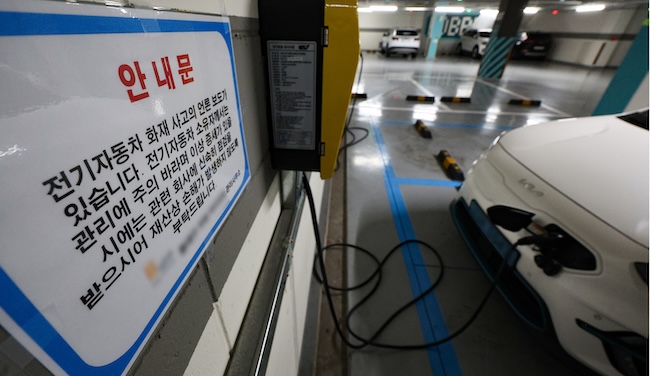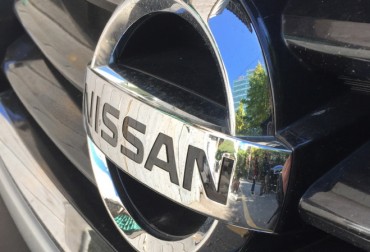
Nearly 60% of electric vehicle (EV) charging stations in South Korea are installed underground. (Image courtesy of Yonhap)
SEOUL, Sept. 2 (Korea Bizwire) — Nearly 60% of electric vehicle (EV) charging stations in South Korea are installed underground, according to a recent government report, raising concerns about fire safety and emergency response capabilities in a country rapidly embracing electric mobility.
The data, released by the Ministry of Environment to lawmaker Lim Lee-ja of the People Power Party, reveals for the first time the full scale of underground EV charging infrastructure in the country. Out of 343,889 charging stations surveyed, a staggering 58.7% are located below ground.
This revelation comes in the wake of an EV fire last month in an underground parking lot in Incheon’s Cheongna International City, which has heightened awareness of the potential risks associated with underground charging facilities.
“Our EV policies have been overly focused on expansion and adoption, neglecting crucial aspects of fire prevention and management,” Lim said. She called for swift action to develop targeted fire response strategies for different charging station locations.
As of July, South Korea had a total of 373,961 EV charging stations nationwide. The Ministry of Environment has precise location data for 343,889 of these, primarily those installed with government subsidies. The survey of chargers installed without subsidies is still ongoing.
The prevalence of underground installations is particularly pronounced among slow chargers, with 63.9% (195,301 out of 305,569) located below ground. Fast chargers, while fewer in number, are predominantly above ground, with only 17.3% (6,634 out of 38,348) installed underground.
Compounding the safety concerns, most existing slow chargers lack power line communication (PLC) modems, which can prevent overcharging by communicating with the vehicle’s battery management system. The government plans to mandate “smart control” chargers equipped with PLC modems starting next year, but the rollout will be gradual.
The government aims to replace half of the estimated 40,000 chargers that are over five years old with smart control chargers next year. Additionally, authorities are implementing various safety measures, including mandatory installation of wet sprinklers in new building parking lots and equipping fire stations with specialized EV fire suppression equipment.
However, there’s a notable absence of plans to relocate existing underground chargers to the surface. Only a handful of local governments, including Ulsan, Incheon, Jeonju, and Gongju, have announced initiatives to support or encourage the relocation of underground chargers in residential complexes to above-ground locations.
Current regulations, updated in November 2023, limit new EV charger installations to the third basement level or above in newly permitted buildings. However, experts argue this may still be too deep, especially when compared to stricter guidelines from fire safety organizations and some local governments.
The Korea Fire Protection Association’s safety standards recommend against underground installations altogether, suggesting that if unavoidable, chargers should be placed no lower than the second basement level and near building entrances or ramps.
Similarly, the Ministry of Education’s guidelines for educational facilities specify installation “within the second basement level in locations easily accessible to outside air for smoke and flammable gas ventilation.”
Local governments have also weighed in, with Busan’s Fire and Disaster Headquarters recommending installations “preferably near parking ramp entrances or close to evacuation floors with access to outside air.”
Seoul has gone further, stipulating that rapid chargers should be located “preferably between the first basement level and the first floor above ground.”
Kevin Lee (kevinlee@koreabizwire.com)






